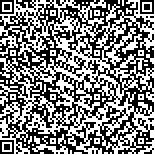| Quote
: |
唐暹, 曾丽蓉, 李琎, 蒋隽, 唐志杰, 周璐, 谷桂灵.经筋疗法联合马王堆导引术对脑卒中后下肢痉挛患者运动功能及表面肌电信号的影响[J].湖南中医药大学学报英文版,2025,45(9):1681-1687.[Click to copy
] |
|
| |
|
|
| This paper
:Browser 149times Download 83times |
| 经筋疗法联合马王堆导引术对脑卒中后下肢痉挛患者运动功能及表面肌电信号的影响 |
| 唐暹,曾丽蓉,李琎,蒋隽,唐志杰,周璐,谷桂灵 |
| (郴州市第一人民医院, 湖南 郴州 423000;湖南中医药大学, 湖南 长沙 410208) |
| 摘要: |
| 目的 探讨经筋疗法联合马王堆导引术对脑卒中后下肢痉挛患者运动功能及表面肌电(sEMG)信号的影响。方法 选取2022年1月至2023年6月在郴州市第一人民医院西院康复医学科住院治疗的脑卒中患者80例,随机分为对照组(40例)和试验组(40例)。对照组接受常规康复治疗,试验组在常规康复治疗的基础上加用经筋疗法联合马王堆导引术进行治疗,两组患者均每周治疗5次,持续4周。在治疗前和治疗4周后分别采用表面肌电仪记录两组患者股直肌和腓肠肌被动牵拉时的sEMG信号,包括肌电信号幅度均方根(RMS)值和积分肌电(iEMG)值;同时对两组患者进行小腿三头肌和股四头肌的改良Ashworth分级量表(MAS)、Fugl-Meyer运动功能评定量表-下肢部分(FMA-LE)、Berg平衡量表(BBS)、改良Barthel指数(MBI)和Holden步行功能分级(FAC)评估。结果 与治疗前相比,治疗后两组患者股直肌的RMS值和iEMG值、腓肠肌的RMS值和iEMG值、小腿三头肌和股四头肌的MAS分级均降低(P<0.05,P<0.001),且试验组低于对照组(P<0.05,P<0.001);治疗后两组患者FMA-LE评分、BBS评分、MBI评分、FAC分级均升高(P<0.01,P<0.001),且试验组高于对照组(P<0.05,P<0.01)。结论 经筋疗法联合马王堆导引术能够有效改善脑卒中患者的下肢痉挛状态,降低股直肌和腓肠肌的sEMG信号,同时改善患者下肢运动、平衡和步行功能,促进日常生活活动能力的提高。 |
| 关键词: 脑卒中 痉挛 经筋疗法 推拿 针刺 马王堆导引术 表面肌电信号 |
| DOI:10.3969/j.issn.1674-070X.2025.09.012 |
| Received:April 16, 2025 |
| 基金项目:湖南省临床医疗技术创新引导项目(2021SK50310); 湖南省中医药科研计划项目(D2022038)。 |
|
| Effects of meridian sinew therapy combined with Mawangdui Daoyin on motor function and surface electromyography in patients with post-stroke lower limb spasticity |
| TANG Xian, ZENG Lirong, LI Jin, JIANG Juan, TANG Zhijie, ZHOU Lu, GU Guiling |
| (Chenzhou First People爷s Hospital, Chenzhou, Hunan 423000, China;Hunan University of Chinese Medicine, Changsha, Hunan 410208, China) |
| Abstract: |
| Objective To investigate the effects of meridian sinew therapy combined with Mawangdui Daoyin on motor function and surface electromyography(s EMG) in patients with post-stroke lower limb spasticity. Methods A total of 80 stroke patients hospitalized in the Rehabilitation Department of the West Campus of Chenzhou First People’s Hospital from January 2022to June 2023 were selected and randomly divided into a control group(40 cases) and an experimental group(40 cases). The control group received conventional rehabilitation therapy, while the experimental group underwent additional treatment with meridian sinew therapy combined with Mawangdui Daoyin on the basis of conventional rehabilitation therapy. Both groups underwent treatment five times per week for four consecutive weeks. Before treatment and after four weeks of treatment, sEMG signals of rectus femoris and gastrocnemius muscles during passive stretching were recorded in both groups using a surface electromyograph, including the root mean square(RMS) and integrated electromyography(iEMG) values. Meanwhile, both groups were assessed using the modified Ashworth scale(MAS) for the triceps surae and quadriceps femoris, the Fugl-Meyer assessment for lower extremity(FMA-LE), the Berg balance scale(BBS), the modified Barthel index(MBI), and the Holden functional ambulation classification(FAC). Results Compared with pre-treatment values, both groups exhibited decreases in the RMS and iEMG values of the rectus femoris and gastrocnemius muscles, as well as in the MAS grades of the triceps surae and quadriceps femoris after treatment(P<0.05, P<0.001). Moreover, these values were lower in the experimental group than in the control group(P<0.05, P<0.001). After treatment, both groups also showed increases in scores of FMA-LE, BBS, and MBI, and FAC grades(P<0.01, P<0.001), with the experimental group demonstrating higher values than the control group(P<0.05, P<0.01). Conclusion Meridian sinew therapy combined with Mawangdui Daoyin can effectively alleviate lower limb spasticity in patients with stroke, reduce sEMG activity of the rectus femoris and gastrocnemius muscles,improve lower limb motor function, balance, and walking ability, and enhance activities of daily living. |
| Key words: stroke spasticity meridian sinew therapy tuina acupuncture Mawangdui Daoyin surface electromyography |
|

二维码(扫一下试试看!) |
|
|
|
|


